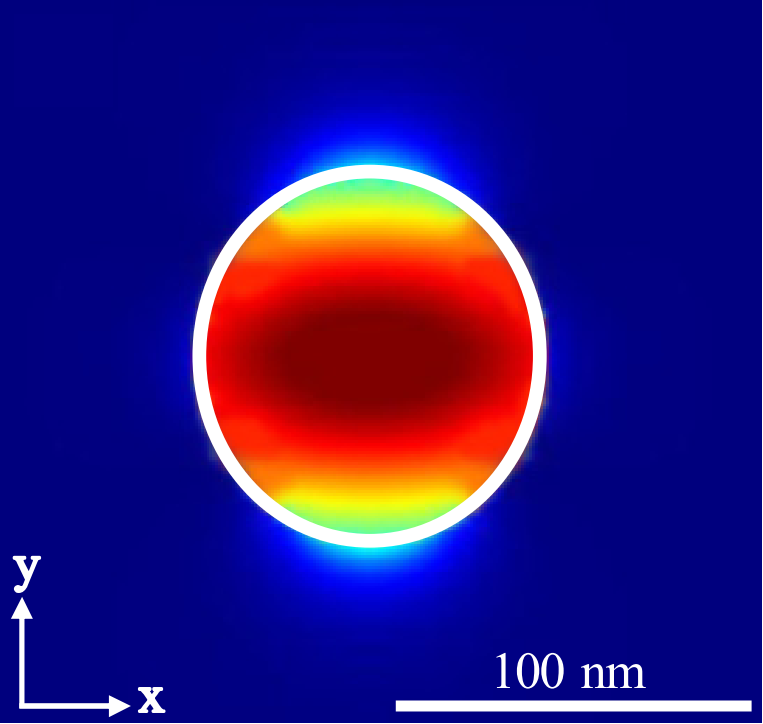Stanford University researchers have developed a new type of light-enhancing optical cavity that enables faster secure data transmission via quantum encryption. The research, published in January’s Optical Materials Express, represents a step toward brighter single-photon sources, which could help advance quantum-based encryption techniques and lead to quantum encryption being incorporated into consumer devices.

Schematic depiction of the new nanocavity. (Credit: Yousif A. Kelaita -Stanford Universtiy)
Quantum encryption techniques use individual photons to encode data. A limitation of this, however, has been the ability to emit photons at high rates. ‘One of the most important figures of merit for single-photon sources is brightness - or collected photons per second - because the brighter it is, the more data you can transmit securely with quantum encryption,’ explained Yousif Kelaita, a researcher at Stanford University.
In the paper published in Optical Materials Express, Kelaita and his colleagues showed that the newly developed nanocavity, measuring 200 nanometres tall and 100 nanometres across, significantly increased the emission brightness of quantum dots - nanometre scale semiconductor particles that can emit single photons - enabling faster secure data transmission in systems that feature the cavity.
The nanocavity was created using highly reflective silver to coat the sides of a nanoscale semiconductor pillar sitting on a substrate, allowing light to travel around inside the nanopillar, turning it into a very small optical cavity. The researchers say that the same design concept could be used to build nanocavities from other materials that are tailored for different single-photon emitters.
The system uses a type of light/matter interaction at the nanometre scale, known as the Purcell effect, to enhance the emission efficiency of a quantum dot. Systems showing Purcell enhancement will emit more photons over a given amount of time, which could enable quantum encryption systems that operate faster than currently possible.
‘We demonstrated a new type of cavity with a volume multiple orders of magnitude lower than the current state of the art in solid-state systems,’ said Kelaita. ‘The system produces strong Purcell enhancement and high light collection efficiency at the same time, which leads to an overall increase in the brightness of the single-photon source.’ The researchers found that quantum dots placed inside the new nanocavities emitted more photons per second than quantum dots outside of such cavities.
Nanocavities with even better characteristics are now being worked on by the researchers. For example, they are looking to make nanocavities in diamond, which could allow single-photon sources that operate at room temperature, a key requirement for incorporating quantum encryption into consumer devices.
‘This new project taught us the merit of aiming for ultra-small volumes,’ commented Kelaita. ‘Now we’re trying to leverage that knowledge with experience we have in using computers to design cavities to hopefully create a new type of cavity with even better metrics and figures of merit that push the field ahead even more.’

